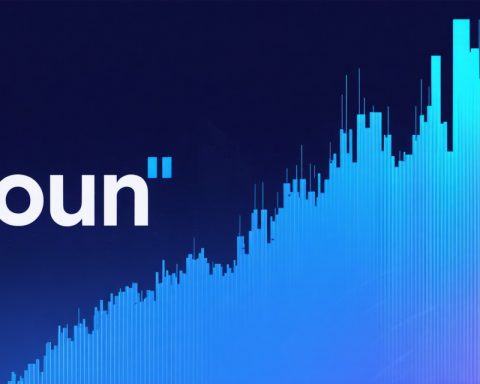- Google introduces the Willow quantum chip, potentially revolutionizing computing speeds and industry dynamics.
- Quantum computing stocks have surged by 281% following the announcement, though mass production challenges remain.
- Jim Cramer advises caution, comparing the hype to cryptocurrency volatility.
- AMD focuses on AI and data centers, aiming to dominate the expanding AI market with environmentally friendly solutions.
- The semiconductor industry is poised at a critical juncture, driven by technological innovations and strategic shifts.
In a groundbreaking move, Google has unveiled the Willow quantum chip, promising to revolutionize computing speed and reshape technology landscapes. This announcement has sent shockwaves through investment circles, leading to a 281% surge in quantum computing stocks. However, this excitement is tempered by the daunting task of scaling quantum chips for mass production—a challenge that casts doubt on their widespread adoption. These chips teeter between being hailed as the future of computing and being dismissed as impractical due to these hurdles.
Market veteran Jim Cramer urges caution, likening the current buzz around quantum technology to the volatile swings seen in cryptocurrency markets. His insights serve as a sober reminder for investors to weigh the risks inherent in this speculative arena.
Meanwhile, AMD is capturing attention with its strategic focus on AI and data centers. By investing in cutting-edge research and fostering collaborative ventures, AMD aims to carve out a significant slice of the rapidly expanding AI market. Their strategy highlights an industry-wide shift towards high-efficiency computing and environmentally friendly solutions, as AI and green tech chips continue to gain traction.
Reflecting on the challenges and transformations of 2024, the semiconductor industry stands at a crossroads of innovation and unpredictability. The driving force behind its evolution is a blend of technological marvels like Google’s quantum advancements and strategic maneuvers by companies like AMD. As these developments unfold, the industry eagerly anticipates further breakthroughs that could redefine computational norms and sustainability goals. This exciting narrative sets the stage for a future brimming with potential and innovation.
Revolutionizing the Tech World: Beyond the Willow Quantum Chip
What are the pros and cons of Google’s Willow Quantum Chip?
Pros:
1. Computational Speed: The Willow quantum chip promises unprecedented computational speeds, which could drastically reduce the time required for complex calculations, thus opening new possibilities in scientific and business applications.
2. Technological Leadership: As part of Google’s innovative efforts, this chip positions the company as a leader in cutting-edge technology, potentially reshaping various industries.
3. Potential for Breakthroughs: This chip could pave the way for breakthroughs in machine learning, cryptography, and optimization problems, fundamentally altering how these fields operate.
Cons:
1. Scalability Challenges: One of the main hurdles is the difficulty of scaling these chips for mass production, which remains a significant technological challenge.
2. Investment Risks: The volatility surrounding quantum technology investments resembles that of cryptocurrency markets, making it a high-risk area for investors.
3. Practical Limitations: Despite their potential, the complexities of quantum chips make them currently impractical for widespread use.
How does AMD’s strategic focus compare to Google’s quantum ambitions?
While Google’s focus is on pioneering quantum computing with the Willow chip, AMD is strategically investing in AI and data centers. Here’s a comparison of both approaches:
– Strategic Focus: Google is pushing the boundaries of quantum computing, while AMD is solidifying its position in AI and data center technologies.
– Market Approach: AMD is aligning its efforts with the growing demand for high-efficiency and environmentally friendly solutions, tapping into more immediate market needs.
– Innovation vs. Adoption: Google’s innovation might lead to long-term technological shifts, whereas AMD’s strategies aim for quicker adaptation and implementation due to current market demands.
What are the 2024 trends in the semiconductor industry?
1. Quantum Computing Developments: With Google’s quantum advancements, more companies are expected to explore and invest in quantum technology.
2. AI Integration: As demonstrated by AMD’s strategies, AI integration into semiconductor technologies is becoming a major trend, focusing on enhancing performance and efficiency.
3. Sustainability: There’s a strong push towards sustainable solutions, highlighted by a demand for green technology chips and environmentally responsible innovations.
Relevant Links
For more information on quantum computing and AMD’s market strategies, you might explore:
– Google
– AMD



















